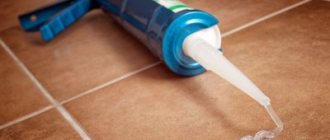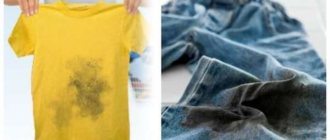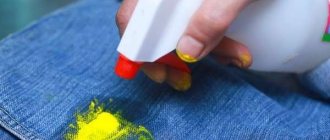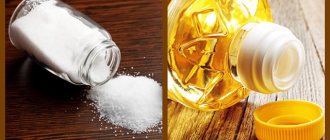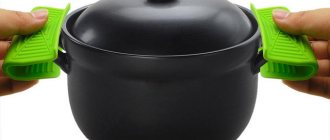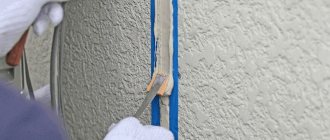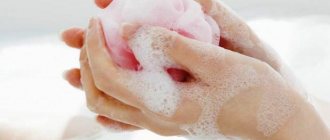Home / Care
Back
Published: 04/21/2021
Reading time: 2 min
0
22
After home renovation, stains of unknown origin may be found on clothes and fabrics. All construction contaminants have their own cleaning characteristics, but the biggest problem is caused by sealant. Liquid silicone is able to penetrate into the deep layers of tissue and remain there for a long time, as it has good resistance to moisture and temperature influences, which does not allow the sealant to be removed from clothing by regular washing.
There are home and industrial methods for removing stains from sealant that has gotten on the fabric or has long dried out.
- 1 General recommendations
- 2 Features of different types of sealant
- 3 Removing sealant using purchased products
- 4 Home remedies
- 5 Conclusion
What are the means
Naturally occurring means for cleaning silicone residues are divided into:
- by method of application (mechanical and chemical):
- by composition.
All solutions, in turn, are divided into neutral, acidic and alkaline. Their specific type is “tied” to the active substance of the silicone sealant. This is an alkali or acid (the characteristic smell of vinegar), as well as another component (neutral). There are also universal solvents, but more on them later. And it’s easy to determine the type of silicone by looking at its label.
Alkaline
This group of products is effective against alkaline-based silicone compounds containing amines. If the composition of the sealant is unknown, then to successfully complete the procedure it is recommended to use universal solvents.
Acidic
You can try to wash fresh, not completely cured acidic silicone sealant using ordinary vinegar essence. It is recommended to use a combination of solvents and a mechanical tool (knife or scraper).
Neutral
When the sealing compound used is neither acidic nor alkaline, being neutral in chemical reaction, the appropriate composition is used. One of the solvents that will be effective is acetone, gasoline, or white spirit. All of them are easy to find in hardware stores.
How to remove dried sealant? (+video)
Dried sealant is much more difficult to remove than with a fresh stain. But there is still a solution, and there are two options: you can use specialized purchased products, or you can use traditional methods.
Specialized products:
- White spirit and other solvents.
- Using a remover for polyurethane foam.
- Specialized products for removing complex stains.
Traditional methods:
- vinegar essence;
- alcohol and alcohol-containing substances;
- hydrogen peroxide;
- vegetable oil.
Traditional methods are less effective than chemicals, but they are safer both for the person doing the cleaning and for the clothes themselves. In addition, traditional methods are cheap and easy to implement compared to the use of chemicals.
Vinegar essence
The best way to remove acid-based sealant stains. You should use 70% vinegar essence. Wet the product generously in vinegar and leave for 25-30 minutes while the vinegar interacts with the sealant.
Next, all that remains is to remove the remaining product with a dry cloth. You just need to carry out such work with gloves and a respirator, or even better with goggles. The thing is that vinegar will emit caustic fumes that are very harmful to humans.
After such work, a pungent odor may remain on clothing, which can be eliminated by using fabric conditioners.
Alcohol
Instead of alcohol, you can use other alcohol-containing substances: vodka, denatured alcohol, any specific types of alcohol. We soak a piece of gauze or cloth in an alcohol-containing product, and then apply it to the area of contamination.
We wait until the silicone begins to roll into lumps, after which we remove them with a brush. To remove the smell of alcohol from clothes, simply wash them once.
White spirit and other solvents
In addition to white spirit, ordinary acetone has a good effect. We soak a piece of clean cloth in solvents that matches the size of the stained area on the clothing, and then apply the cloth to the stain.
If after cleaning it was not possible to completely remove the stain, which often happens on jeans or woolen clothes, all that remains is to hide the remaining stain with a pattern, patch or pocket
On top of the cloth we apply 4-5 layers of plain paper (newspaper or notebook sheets, paper sheets for the printer are suitable). The entire resulting structure must be ironed on top with an iron, the temperature of which is selected depending on the type of fabric (see the label on the clothing).
After this, all that remains is to thoroughly wash the clothes (by hand or in a machine) and the remaining sealant will be removed.
Hydrogen peroxide
Only 98% hydrogen peroxide is suitable, which is usually not used at home and you will have to spend money on it. Apply peroxide to a clean gauze or cloth and carefully wipe the stained area with it.
We wait for the end of the chemical reactions of the peroxide (foaming should occur), after which we wipe off the sealant with warm water. All that remains is to thoroughly wash the clothes by hand or in a machine using laundry soap.
Remover for polyurethane foam
One of the best ways to remove sealant stains, applicable even on light-colored clothing. Apply the polyurethane foam remover to the sealant stain, wait a little (until foaming ends), and then remove the sealant particles with any sharp object.
If you did everything correctly, the sealant will transform into a thin film, which will be very easy to remove with improvised means. If something goes wrong, wash the clothes manually and repeat the procedure, but more carefully.
Special means
There are special household chemicals designed to remove such serious types of stains. The most popular products are Penta 840 and Antisil. They must be used in strict accordance with the instructions for use included with the medications.
Before carrying out full-scale work, treat a small area of clothing with the product to find out whether it is harmful to such material. If the area becomes discolored or deformed, use other methods, otherwise you will permanently damage the clothing.
Vegetable oil
Soak a cotton pad or turunda thoroughly with vegetable oil, and then wipe the stained area with it. Afterwards, you need to thoroughly wash your clothes in hot water, using any washing powder (but it is advisable to use powder for removing grease stains).
Cleaning method No. 4
The preferred way to remove unwanted stains is to use acetone or white spirit. For this:
- Cover the fabric surface to be treated with a cloth soaked in any of these liquids.
- Place four layers of paper (newspaper, notebook paper) on top of a wet rag.
- Iron the entire structure with a hot iron.
- After this procedure, the sealant lubricant can be easily removed by washing.
It is important not to overheat the fabric. You need to monitor the temperature of the iron to avoid damage to your clothes.
Review of professional products
If other methods prove ineffective, professionally used products come to the rescue. They will clean surfaces of silicone residues with a guaranteed high result.
Penta-840
Refers to powerful means, washes, which make it equally easy to cope with the consequences of unsuccessful sealing, dissolve silicone residues, and renew seals. Works with any type of surface. It is first recommended to verify the effect of Penta by applying a small amount of the product to the silicone compound.
Quilosa Limpiador
Composition in an aerosol can. Designed for processing (cleaning) tools and equipment after contact with silicone mixtures, removing fresh and hardened sealant. The product is convenient to apply by spraying it over the surface to be treated.
Permaloid
Another liquid composition, a mixture of highly volatile organic solvents. They are used for professional cleaning of silicone from plastic surfaces, since it is inert to plastics. Non-toxic, does not affect the destruction of ozone compounds. Release form: 5-liter canisters.
Lugato Silicon Entferner
Special cleaning paste in 80 ml tubes. It has an equally strong effect on fresh and old silicone layers. Before use, it is recommended to remove the material to a thickness of 2 millimeters. The composition is applied to the surface and left for 1 to 5 hours. The softened silicone is then mechanically removed with a knife or scraper.
Silicone Remover
Gel cleaner for treating dry, pre-cleaned layers of silicone. It is recommended to work with gloves and well-ventilated areas. If water gets in, the effectiveness of the composition decreases.
The difference between silicone and acrylic sealant
Among the two types of sealants used (silicone, acrylic) there are different characteristic properties:
- Acidic silicone sealants are not used for sealing metals, natural stone, materials containing cement, as they are capable of reacting. Acrylic compounds are universal and do not harm different materials.
- Post-processing. The dried acrylic layer can be processed and applied with a paint layer. What can't you do with silicone material? Transparent silicone turns yellow over time.
- Acrylic compounds can withstand strong vibration, while silicone ones provide a barrier against the penetration of moisture, noise, and odor.
The most reliable way to remove silicone and acrylic sealant from various planes is to combine mechanical and chemical methods.
From the bath
To remove the old seam between the wall and the bathroom, you need to prepare a sharp knife, salt, a washcloth, and a solvent.
If the marks are fresh, then vinegar will help wash off the silicone sealant. Once the stain has hardened, apply vinegar overnight.
When using an acrylic surface, care should be taken as it is more susceptible to mechanical damage. For cleaning, a wooden or plastic scraper is used and the products are applied for no more than 15 minutes.
What is silicone and where is it used?
Silicone is a chemical compound that is an organic substance containing silicon and oxygen. It is quite difficult to wash from fabric, because it tends to quickly penetrate its fibers. The difficulty of removing this substance is also due to the following factors:
Silicone Bathroom Sealant
- rapid hardening;
- resistance to high temperatures;
- moisture resistance - for this reason, regular washing with powder is not able to cope with contamination;
- elasticity.
Silicone has a lot of advantages. It is able to increase or decrease adhesion, impart hydrophobicity, and work at any, even extreme, temperatures and in conditions of high humidity. This substance also has dielectric properties, bio- and chemical inertness, durability, and environmental friendliness. Thanks to these qualities, it is widely used in a variety of fields:
Polyurethane roofing sealant
- construction;
- decoration;
- art;
- metal casting;
- production of furniture fittings;
- archeology and paleontology;
- automotive, aviation, aerospace industries;
- medicine;
- cosmetology.
How to remove
The silicone-based sealant composition has the highest degree of adhesion to any materials. Its hardening at room temperature occurs very quickly. Due to the fact that silicone interacts very poorly with various solvents and chemical compounds, it is quite difficult to clean it; here you will need to use special means to remove the sealant. However, even their use does not always bring positive results, because the process of removing the adhesive composition can be performed differently in each case. You should always keep this in mind before cleaning silicone sealant, otherwise you may damage the material.
Silicone based sealant
There are several ways you can remove silicone residue. More often, sharp objects are used for this purpose, which are used to scrape off the glue; this can be a screwdriver, a knife, etc. But this method has one big disadvantage: after such exposure, the external attractiveness of the treated surface deteriorates. Therefore, it is reasonable to use this method only in cases where the appearance of the material being processed is not important.
There is another method that allows you to remove silicone sealant, this is the use of simple salt. This product is in every home. To do this, you need to lightly moisten the salt with water, then put it on a clean cloth; it is better to take gauze and place three swabs on the place where the contamination from the adhesive composition has formed.
When wiping, there is no need to apply a lot of force, and the movements should be circular. After the cleaning process is completed, greasy stains will remain on the surface; they can be removed using a simple dishwashing detergent.
Using regular salt
There are other ways to clean up glue residue - a chemical remover for silicone sealant. Many of these products allow you to quickly and efficiently remove excess adhesive from surfaces. For example, with the help of white spirit you can quickly remove glue residues from an acrylic bathtub, tiles, plastic and other surfaces.
However, this product cannot be used on surfaces that are painted. It is easy to use such a preparation; we wet the swab and then wipe it over the place where the sealant is applied. Then we wait about forty seconds, then remove the remaining softened silicone from the surface using a sharp knife or blade.
However, a greasy stain remains in the place where the adhesive was; it can be removed using the same solvent, moisten a cloth and wipe the surface. In the case where the glue was applied not so long ago and has not yet had time to be completely absorbed and hardened, it can be removed with acetone or ordinary table vinegar.
Considering the sharp, specific smell of such products, you need to take care of good ventilation in the room; a respiratory mask would also be useful, because acetone can cause an allergic reaction.
Currently, on store shelves you can see various products that allow you to soften and wash off silicone-based sealant. They allow you to remove glue from various surfaces, but when choosing them you need to carefully read the instructions so that later use does not cause damage to the surface being treated. The most commonly used means are:
- Lugato and Penta 840.
- Dow Corning OS-2 and Antisi.
- Gasket Remover and Quilosa.
Chemicals
Useful tips
You need to start removing silicone droplets from clothes using mechanical methods. You can remove a fresh mark with a blade. And then wipe the stain with salt, which is placed in a linen bag.
People begin to use professional means when all methods have been tried.
You need to be careful when removing stains, because you can ruin your favorite item irrevocably.
Source of the article: https://hozzi.ru/pyatna/kak-ubrat-s-odezhdy-silikon
How to clean clothes from silicone sealant and remove its traces, How to wash silicone glue from clothes.
How to remove sealant from clothes?
Sealant is a substance that is used in everyday life and in repair work. It is characterized by a high solidification rate at low temperatures. It is based on silicone. The viscous substance is not easy to remove from surfaces. It’s worth finding out how to remove sealant from clothes and familiarizing yourself with existing methods.
Removing fresh stains from clothes
The sealant penetrates deep into the tissue structure. When frozen, it is resistant to high temperatures and water. Using folk recipes and specialized products, you can wash off the substance. First you need to understand how to remove a fresh silicone stain.
Silicone is necessary to protect the integrity and insulate the desired structure from water. It has a paste-like form and hardens in air. There is a bond at work here - the longer the contact with oxygen, the stronger the connection. Therefore, as soon as a stain is discovered, it is immediately removed.
The first way is to stretch the fabric. A drop of sealant will also stretch and turn into a film. All you have to do is pick it up with a sharp object, and it will immediately fly off.
The most effective way is to freeze clothes. It is placed in plastic and placed in the freezer for 1 hour. Under the influence of sub-zero temperatures, silicone hardens and is then easy to clean off the surface.
The sealant can be removed from the jacket using mechanical force. To do this, use a sharp knife or blade. Carefully cut off the silicone at its very base. There will be a greasy residue on the clothes, which should be washed in warm water with soap or dishwashing detergent. Also clean with a metal sponge or coarse salt.
How to remove old stains
Often, silicone residues on clothes are not detected immediately, but after some time, when they have already dried. Previous methods, relevant for fresh traces of sealant, are not suitable. Use other cleansing methods.
Using rubbing alcohol
The sealant is very afraid of vodka, and even more so of medical alcohol. The sequence of actions for removing silicone at home:
- Drop a little vodka onto a rag and coat the stained area with it.
- They put the thing aside for half an hour.
- Using a brush, thoroughly rub the area of fabric. It will take a few minutes for the sealant to form into small balls and slide off the clothing.
Store products
To clean things from sealant, they sell specialized products, namely Penta-840, Antisil. Must be used according to instructions. If possible, the composition is tested on a small area of tissue.
The store offers many products that will help soften sealant made of silicone. When purchasing a product, be sure to read the manufacturer’s instructions and recommendations. This will prevent the item from being damaged. Good means for softening the glue are:
- Lugato;
- Gasket Remover;
- Antisi.
Brake fluid
An interesting solution is to use brake products. To do this, the drug is sprayed onto the sealant, having previously laid a dense material under it. Then all that remains is to wash the item by hand.
General recommendations
To remove the sealant, you need to use a heated iron. First, a solvent is applied to the mark, and a sheet of paper is placed on top. Then they iron it with an iron. The glue will come off the fabric easily.
Due to the fact that the products and glue belong to fairly active substances, there is a risk of spoiling the material, changing its structure, and deteriorating the paint. This especially applies to synthetics that have poor pigments. To avoid trouble, it is recommended to start with the most gentle methods, gradually moving on to complex ones.
When using store-bought products, alcohol, or acetone, it is imperative to protect the respiratory system and mucous membranes.
Removing silicone sealant from clothing is not that difficult. Despite the fact that the product penetrates deep into the structure, if you know effective methods, you can quickly and painlessly remove dirt from the item.
Removing fresh silicone stains
When sealant gets on wardrobe items, it is very important that it does not have time to harden. If you act promptly and follow all cleaning rules, not a trace will remain of the stain in just a couple of minutes. It is necessary to pull the fabric with your fingers in the area of contamination, and you can remove the silicone from the clothing either with a knife or another sharp object (an awl, a needle), simply by picking up the viscous substance.
After removing the sealant in this way, a greasy mark may remain on the material. Regular washing of the item in a washing machine or by hand will help remove it. If the stain remains, you need to use a laundry stain remover and wash the clothes again.
If sealant has recently come into contact with the fabric, another method will help. It is enough to put the item in the freezer or outside at sub-zero temperatures, wait several hours until the composition hardens, then remove it by picking it up with a sharp object. Clothes should be washed to remove grease stains.
Important! The thicker the silicone trace that gets on the material, the easier it is to remove it this way.
Cleaning other surfaces
Silicone caulk is often used in the kitchen when installing countertops. Solvents can be used to remove such material. Silicone often contains petroleum products, so gasoline is suitable for this purpose. Apply the liquid product with a soft cloth and leave for 30 minutes. After half an hour, you can scrape off the layer with a scraper, spatula or spatula.
If the layer is hardened and old, it is much more difficult to remove. To do this, you will have to use a knife to cut off the top part. Then a solvent is used. Finally, you need to wash off the marks with a detergent that can dissolve grease.
When working with silicone, it often remains on clothing. Chemicals are not suitable for removal as they can damage the fabric. It is advisable to test the solvent by soaking a piece of cloth in the liquid. If it is suitable, then you need to apply the product to the contaminated area and leave for 20-40 minutes, then carefully clean it with a brush and wash the item.
If solvents cannot be used to remove sealant from clothing, then you can use two simple methods:
- Place the soiled clothes in the freezer for 2-3 hours, then remove them and remove traces of silicone with a scraper;
- Treat the stain with hydrogen peroxide, applying it until it disappears completely.
After any cleaning work, clothes must be washed so that no traces of grease remain.
Silicone also remains on your hands when you work with it without gloves. Fresh sealant is easier to remove using a regular bag. It will easily stick to the polyethylene and can be torn off along with the bag.
Table salt is often used for these purposes. You need to take 2-3 tbsp. spoons of salt and dissolve in 250 ml of water. You should put your hands in the liquid and hold it there for about 15 minutes, and then use a brush to wipe off the remaining sealant from the skin.
Warmed vegetable oil is also suitable for removal. It is applied to the skin and wait for the reaction with the silicone to occur. After this, you can simply wash your hands using soap, gel or scrub. You need to be careful with heated oil to avoid getting burned.
Simple measures will help you avoid problems with removing sealant stains. Gloves must be used during operation. Fresh drops should be removed immediately, because they can be easily removed. When sealing seams, it is good to use masking tape, then they will turn out smooth and without traces of silicone. Builders recommend not throwing away the cap from the can, but saving it so that later, if necessary, you can select the right solvent.
Safety precautions when removing silicone traces
When working with various compounds to remove silicone from wardrobe items, it is important to adhere to the following rules:
- Perform all manipulations only with rubber gloves, otherwise burns and irritation on the skin are possible;
- put on a mask and ensure a constant flow of fresh air if the area of contamination is significant;
- do not resort to cleaning clothes if there are small cuts, abrasions and other violations of the integrity of the skin on your hands;
- no matter what you plan to use to wash the sealant, before using any product you need to test it on an inconspicuous area of the item, because if the fabric was painted with low-quality paint, it will be partially discolored after treatment;
- when removing sealant with a brush, it is important to perform all actions carefully and slowly so as not to damage the material;
- First of all, you should resort to non-toxic home remedies, and only if they are ineffective, you can move on to more aggressive industrial compounds.
Traces of sealant can get onto clothing during construction work and other manipulations. You shouldn’t throw the item away right away, since store shelves offer a wide range of professional removers for silicone compounds. Home remedies can also be effective, using readily available ingredients found in every home. It is important to start cleaning the fabric as early as possible, since the age of the stain directly affects the speed of its removal and the final result of cleaning.
Rate this post
From the sides of the bath
This takes into account the material from which the bath is made. It can be acrylic, cast iron, steel. Acrylic bathtubs require special treatment. To clean silicones, you must use only factory-made solvents that are marked with permission to use on such bathtubs.
Steel and cast iron bathtubs are less capricious and can be easily removed from the sealant using abrasive materials and chemicals. But you can’t be overzealous here either - there is a risk of scratches.
Instructions for cleaning steel and cast iron bathtubs mechanically:
- using a blade or a special knife, cut off as much of the top layer of sealant as possible;
- the residues are scraped off with a plastic spatula or steel wool;
- pumice or sandpaper with small grains will help get rid of marks.
After the manipulations done, greasy stains often remain. They can be easily removed with a slab cleaner. You can use baking soda, but it will take longer to clean.
For the chemical method, a solvent is used, which is applied to the sealant seam. After a day, such a strip can be easily removed using a spatula or wooden spatula. The fatty layer is removed with alcohol-containing liquids.
There is another way to remove silicone between the bathtub and the wall. To do this, you need to arm yourself with a screwdriver or scissors. You should start from the edge of the bathtub. In this place, use the sharp edge of the tool to pick up the sealant. Next, without sudden movements, pull it around the perimeter.
If there are any remaining areas of silicone, you can cut them off with a knife and then work with pumice.
Tools
When removing silicone sealant, use the necessary tools.
You can clean silicone from a hard surface using:
- kitchen sponges;
- brushes;
- knife, for this work you should choose a special knife, you can take a shoemaker’s or stationery knife;
- screwdrivers;
- sandpaper;
- kitchen steel wool;
- plastic scraper;
- wooden stick to remove silicone residue.
You should prepare dishwashing detergent, find old rags, rags to remove dirt from the surface.
Using the listed tools, you can easily get rid of sealant on any surface, be it glass, plastic, wood, metal, and also remove the old layer of sealant from tiles.
A hair dryer will be useful for this work. With its help, the silicone is heated and then easily removed with a wooden or plastic scraper. This method is convenient for removing dirt from glass surfaces, mirrors, and aluminum surfaces.
